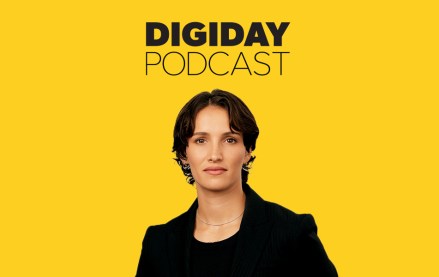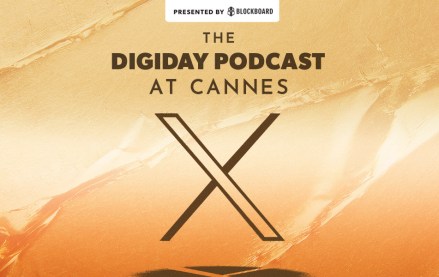How Zola CMO Victoria Vaynberg has introduced a new brand to expand its audience

Subscribe: Apple Podcasts • Spotify
Zola isn’t just a website for weddings anymore. Late last year, the e-commerce company went from a one-stop destination for all things wedding to include a new baby registry service, Zola Baby. Typically, a new service comes with renewed customer acquisition efforts. But this latest endeavor has revolved around word-of-mouth as opposed to shelling out ad dollars to find new shoppers, according to Zola CMO Victoria Vaynberg.
The company has experimented with out-of-home advertising in the past and currently has an active TikTok presence to help boost brand awareness. On this episode of the Digiday Podcast, we caught up with Vaynberg to talk about Zola’s TikTok strategy, growth in a new category and navigating today’s ever-changing digital landscape.
Below are highlights from the conversation, which have been lightly edited and condensed for clarity.
On expanding the Zola multiverse
To be honest, at the moment we don’t spend any paid acquisition dollars on baby [registry]. It’s really organic growth through our own existing community. Because we, from a wedding standpoint, are often part of a couple’s journey for 12, 15 or 18 months, we’re talking to them many, many times throughout this experience. We know that couples recommend Zola to each other. We are very much organically growing. We’re just marketing Zola baby amongst our own audience and then through some PR efforts. But yes, we’re not even spending there yet. That just goes to show the true customer experience that our couples get with Zola that they want to see that through to the next thing.
Test and learn channels
We love to test and learn. We definitely have our tried and true channels. We focus a lot on search. This is a very high-intent audience when they’re searching. So that’s a big piece of the puzzle for us — same with SEO in terms of producing content that brings somebody in. [We] do streaming and audio and social, all the kinds of major players and we test in and out. Throughout peak and engagement season, we’ll often run out-of-home campaigns so we are everywhere. For this category in particular, the digital landscape is challenging but we’re certainly trying to figure out how to best stand out on TikTok, which is undoubtedly the place that our target demo is spending a lot of time. That’s definitely a place where I’d say we put the most both organic and paid attention. With Instagram, it’s of course more challenging to make strides from an organic standpoint. So we started to try to balance those things.
Feeding the short-form video beast
We thankfully have some team members internally that have always been comfortable shooting content. The other nice part is one of the people internally who does appear on our TikTok the most is also someone who’s engaged. So there’s this real level of authenticity. Which, it’s a person who’s engaged, they’re also working here so they have lots of information on the wedding planning process. The nice part of TikTok is despite how much volume you have to produce, it’s a phone in your hand. It’s not that much equipment.
More in Podcasts

How TikTok’s ‘The Secret Lives of Mormon Wives’ landed on Hulu, with Select Management Group’s Danielle Pistotnik
The talent manager and executive producer of “The Secret Lives of Mormon Wives” joined the Digiday Podcast to break down the process of the reality show finding a home on Hulu.

Digiday Podcast at Cannes: Former Bachelorette Rachel Lindsay makes the case for creators
Between panels and parties, creators are looking to get face time with ad execs, brand marketers and partners like Spotify. However, rather than coming to the Croisette to strike deals, they’re playing a long game.

Digiday Podcast at Cannes: From center stage to closed doors, inside X’s quiet Cannes strategy
Once a Cannes hotspot, Twitter Beach is no more. In this episode, we explore X’s quiet retreat from the Croisette—and why no one’s talking about the TikTok ban either.







